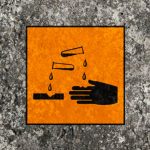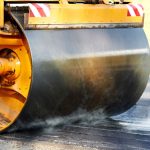Why does concrete flake, spall and crack?
Why does concrete flake and spall?
In areas of the country that are subjected to freezing and thawing the concrete should be air-entrained to resist flaking and scaling of the surface. If air-entrained concrete is not used, there will be subsequent damage to the surface.
The water/cement ratio should be as low as possible to improve durability of the surface. Too much water in the mix will produce a weaker, less durable concrete that will contribute to early flaking and spalling of the surface.
The finishing operations should not begin until the water sheen on the surface is gone and excess bleed water on the surface has had a chance to evaporate. If this excess water is worked into the concrete because the finishing operations are begun too soon, the concrete on the surface will have too high a water content and will be weaker and less durable.
Why does concrete crack?
Concrete, like all other materials, will slightly change in volume when it dries out. In typical concrete this change amounts to about 500 millionths. Translated into dimensions-this is about 1/16 of an inch in 10 feet. The reason that contractors put joints in concrete pavements and floors is to allow the concrete to crack in a neat, straight line at the joint when the volume of the concrete changes due to shrinkage.
Schedule Your Consultation
Call Pavement constructors today to discuss your industrial or commercial concrete paving needs. Our experts are ready to help you make the right decisions for your project specifications. With nearly 100 years of family knowledge in the concrete paving business, you can be sure you are getting the best from the best.
Information provided by cement.org



